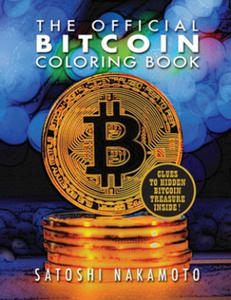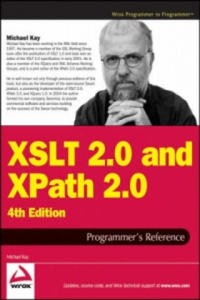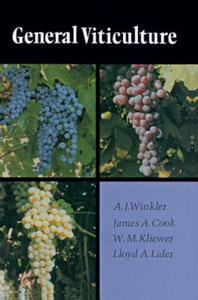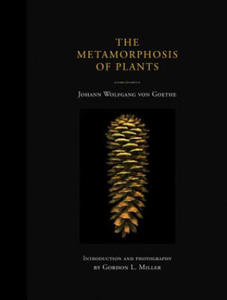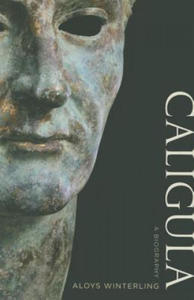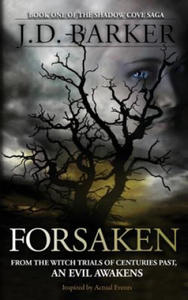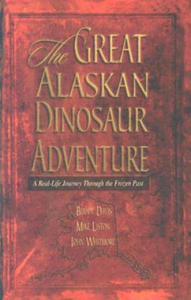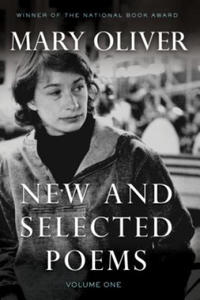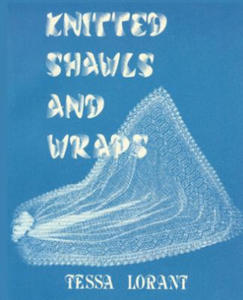libristo book leaf press
- znaleziono 15 produktów w 1 sklepie
Of Green Leaf, Bird, and Flower Yale University Press
Książki / Literatura obcojęzyczna
Highlighting an enduring interest in natural history from the 16th century to the present, this gorgeous book explores depictions of the natural world, from centuries-old manuscripts to contemporary artists' books. It examines the scientific pursuits in the 18th and 19th centuries that resulted in the collecting and cataloguing of the natural world. It also investigates the aesthetically oriented activities of self-taught naturalists in the 19th century, who gathered flowers, ferns, seaweed, feathers, and other naturalia into albums. Examples of 20th- and 21st-century artists' books, including those of Eileen Hogan, Mandy Bonnell, and Tracey Bush, broaden the vision of the natural world to incorporate its interaction with consumer culture and with modern technologies. Featuring dazzling illustrations, the book itself is designed to evoke a fieldwork notebook, and features a collection pocket and ribbon markers.
Sklep: Libristo.pl
Book of the Heart The University of Chicago Press
Książki / Literatura obcojęzyczna
In today's increasingly electronic world, we say our personality traits are "hard-wired" and we "replay" our memories. But we use a different metaphor when we speak of someone "reading" another's mind or a desire to "turn over a new leaf" - these phrases refer to the "book of the self", an idea that dates from the beginnings of Western culture. Eric Jager traces the history and psychology of the self-as-text concept from antiquity to the modern day. He focuses especially on the Middle Ages, when the metaphor of a "book of the heart" modelled on the manuscript codex attained its most vivid expressions in literature and art. For instance, mediaeval saints' legends tell of martyrs whose hearts recorded divine inscriptions; lyrics and romances feature lovers whose hearts are inscribed with their passion; paintings depict hearts as books; and mediaeval scribes even produced manuscript codices shaped like hearts. In a far-reaching conclusion, Jager considers what the much-prophesied "death of the book" might portend for 21st-century conceptions of the post-textual self.
Sklep: Libristo.pl
Official Bitcoin Coloring Book Leaf Storm Press
Książki / Literatura obcojęzyczna
The long awaited volume from Satoshi Nakamoto, renowned polymath and creator of Bitcoin is finally here Printed on a brilliant white paper, The Official Bitcoin Coloring Book* is packed with unique, right-brain insights into this revolut
Sklep: Libristo.pl
XSLT 2.0 and XPath 2.0 Programmer's Reference 4e John Wiley & Sons Inc
Książki / Literatura obcojęzyczna
This book is primarily a practical reference book for professional XSLT developers. It assumes no previous knowledge of the language, and many developers have used it as their first introduction to XSLT; however, it is not structured as a tutorial, and there are other books on XSLT that provide a gentler approach for beginners. The book does assume a basic knowledge of XML, HTML, and the architecture of the Web, and it is written for experienced programmers. There's no assumption that you know any particular language such as Java or Visual Basic, just that you recognize the concepts that all programming languages have in common. The book is suitable both for XSLT 1.0 users upgrading to XSLT 2.0, and for newcomers to XSLT. The book is also equally suitable whether you work in the Java or .NET world. As befits a reference book, a key aim is that the coverage should be comprehensive and authoritative. It is designed to give you all the details, not just an overview of the 20 percent of the language that most people use 80 percent of the time.It's designed so that you will keep coming back to the book whenever you encounter new and challenging programming tasks, not as a book that you skim quickly and then leave on the shelf. If you like detail, you will enjoy this book; if not, you probably won't. But as well as giving the detail, this book aims to explain the concepts, in some depth. It's therefore a book for people who not only want to use the language but who also want to understand it at a deep level. The book aims to tell you everything you need to know about the XSLT 2.0 language. It gives equal weight to the things that are new in XSLT 2.0 and the things that were already present in version 1.0. The book is about the language, not about specific products. However, there are appendices about Saxon (the author's own implementation of XSLT 2.0), about the Altova XSLT 2.0 implementation, and about the Java and Microsoft APIs for controlling XSLT transformations, which will no doubt be upgraded to handle XSLT 2.0 as well as 1.0. A third XSLT 2.0 processor, Gestalt, was released shortly before the book went to press, too late to describe it in any detail. But the experience of XSLT 1.0 is that there has been a very high level of interoperability between different XSLT processors, and if you can use one of them, then you can use them all.In the previous edition we split XSLT 2.0 and XPath 2.0 into separate volumes. The idea was that some readers might be interested in XPath alone. However, many bought the XSLT 2.0 book without its XPath companion and were left confused as a result; so this time, the material is back together. The XPath reference information is in self-contained chapters, so it should still be accessible when you use XPath in contexts other than XSLT. The book does not cover XSL Formatting Objects, a big subject in its own right. Nor does it cover XML Schemas in any detail. If you want to use these important technologies in conjunction with XSLT, there are other books that do them justice. This book contains twenty chapters and eight appendixes (the last of which is a glossary) organized into four parts. The following section outlines what you can find in each part, chapter, and appendix. Part I: Foundations: The first part of the book covers essential concepts. You should read these before you start coding.If you ignore this advice, as most people do, then you read them when you get to that trough of despair when you find it impossible to make the language do anything but the most trivial tasks. XSLT is different from other languages, and to make it work for you, you need to understand how it was designed to be used. Chapter 1: XSLT in Context: This chapter explains how XSLT fits into the big picture: how the language came into being and how it sits alongside other technologies. It also has a few simple coding examples to keep you alert. Chapter 2: The XSLT Processing Model: This is about the architecture of an XSLT processor: the inputs, the outputs, and the data model. Understanding the data model is perhaps the most important thing that distinguishes an XSLT expert from an amateur; it may seem like information that you can't use immediately, but it's knowledge that will stop you making a lot of stupid mistakes. Chapter 3: Stylesheet Structure: XSLT development is about writing stylesheets, and this chapter takes a bird's eye view of what stylesheets look like.It explains the key concepts of rule-based programming using templates, and explains how to undertake programming-in-the-large by structuring your application using modules and pipelines. Chapter 4: Stylesheets and Schemas: A key innovation in XSLT 2.0 is that stylesheets can take advantage of knowledge about the structure of your input and output documents, provided in the form of an XML Schema. This chapter provides a quick overview of XML Schema to describe its impact on XSLT development. Not everyone uses schemas, and you can skip this chapter if you fall into that category. Chapter 5: The Type System: XPath 2.0 and XSLT 2.0 offer strong typing as an alternative to the weak typing approach of the 1.0 languages. This means that you can declare the types of your variables, functions, and parameters, and use this information to get early warning of programming errors. This chapter explains the data types available and the mechanisms for creating user-defined types. Part II: XSLT and XPath Reference: This section of the book contains reference material, organized in the hope that you can easily find what you need when you need it.It's not designed for sequential reading, though you might well want to leaf through the pages to discover what's there. Chapter 6: XSLT Elements: This monster chapter lists all the XSLT elements you can use in a stylesheet, in alphabetical order, giving detailed rules for the syntax and semantics of each element, advice on usage, and examples. This is probably the part of the book you will use most frequently as you become an expert XSLT user. It's a "no stone unturned" approach, based on the belief that as a professional developer you need to know what happens when the going gets tough, not just when the wind is in your direction. Chapter 7: XPath Fundamentals: This chapter explains the basics of XPath: the low-level constructs such as literals, variables, and function calls. It also explains the context rules, which describe how the evaluation of XPath expressions depends on the XSLT processing context in which they appear. Chapter 8: XPath: Operators on Items: XPath offers the usual range of operators for performing arithmetic, boolean comparison, and the like.However, these don't always behave exactly as you would expect, so it's worth reading this chapter to see what's available and how it differs from the last language that you used. Chapter 9: XPath: Path Expressions: Path expressions are what make XPath special; they enable you to navigate around the structure of an XML document. This chapter explains the syntax of path expressions, the 13 axes that you can use to locate the nodes that you need, and associated operators such as union, intersection, and difference. Chapter 10: XPath: Sequence Expressions: Unlike XPath 1.0, in version 2.0 all values are sequences (singletons are just a special case). Some of the most important operators in XPath 2.0 are those that manipulate sequences, notably the "for" expression, which translates one sequence into another by applying a mapping. Chapter 11: XPath: Type Expressions: The type system was explained in Chapter 5; this chapter explains the operations that you can use to take advantage of types. This includes the "cast" operation which is used to convert values from one type to another.A big part of this chapter is devoted to the detailed rules for how these conversions are done.Chapter 12: XSLT Patterns: This chapter returns from XPath to a subject that's specific to XSLT. Patterns are used to define template rules, the essence of XSLT's rule-based programming approach. The reason for explaining them now is that the syntax and semantics of patterns depends strongly on the corresponding rules for XPath expressions. Chapter 13: The Function Library: XPath 2.0 includes a library of functions that can be called from any XPath expression; XSLT 2.0 extends this with some additional functions that are available only when XPath is used within XSLT. The library has grown immensely since XPath 1.0. This chapter provides a single alphabetical reference for all these functions. Chapter 14: Regular Expressions: Processing of text is an area where XSLT 2.0 and XPath 2.0 are much more powerful than version 1.0, and this is largely through the use of constructs that exploit regular expressions. If you're familiar with regexes from languages such as Perl, this chapter tells you how XPath regular expressions differ. If you're new to the subject, it explains it from first principles.Chapter 15: Serialization: Serialization in XSLT means the ability to generate a textual XML document from the tree structure that's manipulated by a stylesheet. This isn't part of XSLT processing proper, so (following W3C's lead) it's separated it into its own chapter. You can control serialization from the stylesheet using an declaration, but many products also allow you to control it directly via an API. Part III: Exploitation: The final section of the book is advice and guidance on how to take advantage of XSLT to write real applications. It's intended to make you not just a competent XSLT coder, but a competent designer too. The best way of learning is by studying the work of others, so the emphasis here is on practical case studies. Chapter 16: Extensibility: This chapter describes the "hooks" provided in the XSLT specification to allow vendors and users to plug in extra functionality. The way this works will vary from one implementation to another, so we can't cover all possibilities, but one important aspect that the chapter does cover is how to use such extensions and still keep your code portable.Chapter 17: Stylesheet Design Patterns: This chapter explores a number of design and coding patterns for XSLT programming, starting with the simplest "fill-in-the-blanks" stylesheet, and extending to the full use of recursive programming in the functional programming style, which is needed to tackle problems of any computational complexity. This provides an opportunity to explain the thinking behind functional programming and the change in mindset needed to take full advantage of this style of development. Chapter 18: Case Study: XMLSpec: XSLT is often used for rendering documents, so where better to look for a case study than the stylesheets used by the W3C to render the XML and XSLT specifications, and others in the same family, for display on the web? The resulting stylesheets are typical of those you will find in any publishing organization that uses XML to develop a series of documents with a compatible look-and-feel. Chapter 19: Case Study: A Family Tree: Displaying a family tree is another typical XSLT application.This example with semi-structured data-a mixture of fairly complex data and narrative text-that can be presented in many different ways for different audiences. It also shows how to tackle another typical XSLT problem, conversion of the data into XML from a legacy text-based format. As it happens, this uses nearly all the important new XSLT 2.0 features in one short stylesheet. But another aim of this chapter is to show a collection of stylesheets doing different jobs as part of a complete application. Chapter 20: Case Study: Knight's Tour: Finding a route around a chessboard where a knight visits every square without ever retracing its steps might sound a fairly esoteric application for XSLT, but it's a good way of showing how even the most complex of algorithms are within the capabilities of the language. You may not need to tackle this particular problem, but if you want to construct an SVG diagram showing progress against your project plan, then the problems won't be that dissimilar. Part IV: Appendices: A ppendix A: XPath 2.0 Syntax Summary: Collects the XPath grammar rules and operator precedences into one place for ease of reference.Appendix B: Error Codes: A list of all the error codes defined in the XSLT and XPath language specifications, with brief explanations to help you understand what's gone wrong. Appendix C: Backward Compatibility: The list of things you need to look out for when converting applications from XSLT 1.0. Appendix D: Microsoft XSLT Processors: Although the two Microsoft XSLT processors don't yet support XSLT 2.0, we thought many readers would find it useful to have a quick summary here of the main objects and methods used in their APIs. Appendix E: JAXP: the Java API for XML Processing: JAXP is an interface rather than a product. Again, it doesn't have explicit support yet for XSLT 2.0, but Java programmers will often be using it in XSLT 2.0 projects, so the book includes an overview of the classes and methods available. Appendix F: Saxon: At the time of writing Saxon (developed by the author of this book) provides the most comprehensive implementation of XSLT 2.0 and XPath 2.0, so its interfaces and extensions are covered in some detail. Appendix G: Altova: Altova, the developers of XML Spy, have an XSLT 2.0 processor that can be used either as part of the development environment or as a freestanding component.This appendix gives details of its interfaces. Appendix H: Glossary Note: CD-ROM/DVD and other supplementary materials are not included as part of eBook file.
Sklep: Libristo.pl
General Viticulture University of California Press
Książki / Literatura obcojęzyczna
Wherever grapevines are cultivated, this book will be welcome because it fills a long-standing need for a clear, concise treatment of modern viticulture. During the past fifty years, more progress has been made in the science and art of growing grapes for table use and raisin or wine production than in any previous century. This new edition has been revised throughout. The chapters on vine structure, vine physiology, the grape flower and berry set, development and composition of grapes, and means of improving grape quality add to our knowledge of the vine and its functions. The text is designed to enable those concerned with either vine or fruit problems to arrive at considered diagnoses. The student will find the text and the cited references a comprehensive source of information. The grape and allied industries should welcome the updating of the major portion of the book.Here the emphasis is on modern practices in vineyard management in arid and semi-arid regions - with special reference to California.Full and detailed treatment is provided or propagation, supports, training young vines, pruning, cultivation and chemical weed control, irrigation, soil management, diseases and pests, and harvesting, packing and storage. The practices recommended in the book are based on the extensive research conducted in California and elsewhere by the authors and their distinguished colleagues.Examples of practices based on experiments are: methods of propagation which by-pass the usual one-year-in-the-vine-nursery; pruning as related to leaf area and time of leaf functioning, and its effect on berry set and fruit development; virus disease control through thermotherapy and soil fumigation; pests held in check by sanitary, chemical, and biological procedures; and, irrigation practices as related to soil texture. Tissue analysis are employed as guidelines indicating the mineral deficiencies or excesses of vines. Machine harvesting of raisins (with cane cutting) and some wine grape varieties with problems are described.The regional recommendations for table and raisin varieties are based on log years of observations, while those for wine grapes are the results of studies of the interrelation of variety and the heat summation of the different climatic areas. No one concerned with the cultivation of grapes can afford to be without this book.
Sklep: Libristo.pl
Metamorphosis of Plants MIT Press Ltd
Książki / Literatura obcojęzyczna
The Metamorphosis of Plants, published in 1790, was Goethe's first major attempt to describe what he called in a letter to a friend "the truth about the how of the organism." Inspired by the diversity of flora he found on a journey to Italy, Goethe sought a unity of form in diverse structures. He came to see in the leaf the germ of a plant's metamorphosis--"the true Proteus who can hide or reveal himself in all vegetal forms"--from the root and stem leaves to the calyx and corolla, to pistil and stamens. With this short book--123 numbered paragraphs, in the manner of the great botanist Linnaeus--Goethe aimed to tell the story of botanical forms in process, to present, in effect, a motion picture of the metamorphosis of plants. This MIT Press edition of The Metamorphosis of Plants illustrates Goethe's text (in an English translation by Douglas Miller) with a series of stunning and starkly beautiful color photographs as well as numerous line drawings. It is the most completely and colorfully illustrated edition of Goethe's book ever published.It demonstrates vividly Goethe's ideas of transformation and interdependence, as well as the systematic use of imagination in scientific research---which influenced thinkers ranging from Darwin to Thoreau and has much to teach us today about our relationship with nature.
Sklep: Libristo.pl
Caligula University of California Press
Książki / Literatura obcojęzyczna
The infamous emperor Caligula ruled Rome as a tyrant who ultimately became a monster. An exceptionally smart and cruelly witty man, Caligula made his contemporaries worship him as a god. He drank pearls dissolved in vinegar and ate food covered in gold leaf. This book deals with his life and work.
Sklep: Libristo.pl
Forsaken Hampton Creek Press
Książki / Literatura obcojęzyczna
"Scary as hell!" Editorial Review, Horror After Dark "Incredibly written, supremely creepy. I don't say this lightly: J.D. Barker is a force to be reckoned with." NY Times Bestselling Author, Tosca Lee "A talented writer with a delightfully devious mind!" Jeffery Deaver #1 International Bestselling Author Book One of the Shadow Cove Saga Inspired by Actual Events Excerpt from the Journal of Clayton Stone - 1692 She was examined today without torture at Shadow Cove township on the charge of witchcraft. She said she was wholly innocent of the crime and has never in life renounced God. I watched as they brought her out. A poor, sickly thing, worn by her time behind the walls of her prison. Her bared feet and hands bound in leather, her clothing tattered to that of ruin. Despite such condition, her head was held high, her eyes meeting those of her accusers. Upon being stripped and examined, on her right side is found a bluish mark, much like a clover leaf; it was thrice pricked therein but she felt no pain and no blood flowed from the wound. She still refuses to provide her name so we remain unable to search baptismal records, nor has her family stepped forward to claim her as their own. We have no reason to believe she is anything but an orphaned child. I find myself unable to look at her directly in the moments preceding her trial. She is watching me though; with eyes of the deepest blue, she is watching me. Thad McAlister, Rise of the Witch When horror author Thad McAlister began his latest novel, a tale rooted in the witch trials of centuries past, the words flowed effortlessly. The story poured forth, filling page after page with the most frightening character ever to crawl from his imagination. It was his greatest work, one that would guarantee him a position among the legends of the craft. But was it really fiction? He inadvertently opened a door, one that would soon jeopardize the lives of his family. She wants to come back. At home, his wife struggles to keep their family alive. Secretly wondering if she caused it all...a deal she made long ago. A deal with the Forsaken.
Sklep: Libristo.pl
Great Alaskan Dinosaur Adventure MASTER BOOKS INC
Książki / Literatura obcojęzyczna
Based on a spine-tingling adventure into the wilderness of northern Alaska, this book follows the trail of a team of "creation scientists" who have recently discovered frozen, "unfossilized" dinosaur bones. Photos.
Sklep: Libristo.pl
Inside the Puppet Box University of Washington Press
Książki / Literatura obcojęzyczna
Indonesian wayang kulit (shadow puppet) performance is one of the oldest and greatest story telling traditions in the world and lies close to the heart of Javanese culture. These flat puppets, made from water buffalo hide, are elaborately decorated and perforated to cast spectacular shadows when used in performance. Performances are usually based on classical literature with contemporary issues incorporated into particular scenes, and are always accompanied by a gamelan orchestra. Wayang kulit is a highly refined art form that has been performed in Java for hundreds of years. An art of and for the people, wayang kulit remains a popular and significant form of cultural expression to this day. This book explores various aspects of Central Javanese wayang kulit and describes a collection of gold and bronze leaf Surakarta-style wayang kulit including over 200 wayang characters. Each character is identified by name and briefly introduced. Overall, they represent a contemporary set of wayang kulit intended for performance--a glimpse inside the puppet box.Felicia Katz-Harris is the curator of Asian and Middle Eastern folk art at the Museum of International Folk Art in Santa Fe, New Mexico.
Sklep: Libristo.pl
New and Selected Poems, Volume One Beacon Press
Książki / Literatura obcojęzyczna
Strikingly redesigned to accompany the publication of New and Selected Poems, Volume Two Praise for the poetry of Mary Oliver: "One of the astonishing aspects of Oliver"s work is the consistency of tone over this long period. What changes is an increased focus on nature and an increased precision with language that has made her one of our very best poets . . . There is no complaint in Ms. Oliver"s poetry, no whining, but neither is there the sense that life is in any way easy . . . These poems sustain us rather than divert us. Although few poets have fewer human beings in their poems than Mary Oliver, it is ironic that few poets also go so far to help us forward." --Stephen Dobyns, New York Times Book Review "Mary Oliver"s poetry is fine and deep; it reads like a blessing. Her special gift is to connect us with our sources in the natural world, its beauties and terrors and mysteries and consolations."--Stanley Kunitz "One would have to reach back perhaps to [John] Clare or [Christopher] Smart to safely cite a parallel to Oliver"s lyricism or radical purification and her unappeasable mania for signs and wonders."--David Barber, Poetry "I have always thought of poems as my companions--and like companions, they accompany you wherever the journey (or the afternoon) might lead . . . My most recent companion has been Mary Oliver"s The Leaf and the Cloud . . . It"s a brilliant meditation, a walk through the natural world with one of our preeminent contemporary poets."--Rita Dove, Washington Post
Sklep: Libristo.pl
Knitted Shawls & Wraps Thorn Press
Książki / Literatura obcojęzyczna
Knitted veils, clouds, capes, fichus, nightingales and many other types of Victorian-style knitted 'shawls' are collected in this book to give you the pick of knitted wraps. A wealth of traditional stitch patterns - such as 'Boule de Neige', 'Cherry Leaf',
Sklep: Libristo.pl
Biology of Millipedes Oxford University Press
Książki / Literatura obcojęzyczna
Millipedes are common components of the leaf-litter fauna of most terrestrial environments. The Biology of Millipedes is the first single-volume review of this important group and covers their ecology, behaviour, physiology, and evolution. This book is essential reading for terrestrial ecologists, zoologists, and students taking courses in invertebrate biology. Introductory chapters consider millipede taxonomy and phylogeny, basic anatomy, locomotion, and ecomorphology. Later chapters review feeding and digestion, metabolism, nerves, and neurosecretion, together with all aspects of millipedes in decomposition processes, and their role as pests. The authors provide an extremely comprehensive bibliography of research papers and literature.
Sklep: Libristo.pl
Color Atlas of Postharvest Quality of Fruits and Vegetables Iowa State University Press
Książki / Literatura obcojęzyczna
The effects of time and temperature on the quality of fruits and vegetables throughout their postharvest life are visually depicted in the Color Atlas of Postharvest Quality of Fruits and Vegetables. Through hundreds of vibrant color photographs, this unique resource illustrates how the appearance (e.g., color, shape, defects, injuries) of fruits and vegetables changes throughout their postharvest life and how storage temperature greatly contributes to critical quality changes. The book's extensive coverage describes 37 different fruits and vegetables from different groups that were stored at five specific temperatures and photographed daily after specified elapsed periods of time. Individual fruits and vegetables from the following groups are covered: subtropical and tropical fruits; pome and stone fruits; soft fruits and berries; melons and cucurbits; solanaceous and other fruit vegetables; legumes and brassicas; stem, leaf and other vegetables; and bulbs.Information is provided about each individual fruit/vegetable such as characteristics, quality criteria, and recommendations for storage, transport and retail associated with photos of the appearance at particular times and temperatures. This visual documentation shows how important is to handle fruits and vegetables at the right temperature and what happens if the recommendations are not followed. Also shown is the importance of the initial harvest quality of the fruit/vegetable and the expected shelf life as a function of quality at harvest, storage temperature and storage time. The Color Atlas of Postharvest Quality of Fruits and Vegetables will appeal to a diverse group of food industry professionals in the areas of processing, distribution, retail, quality control, packaging, temperature control (refrigerated facilities or equipment) and marketing as a reference tool and to establish marketing priority criteria.Academic and scientific professionals in the area of postharvest physiology and technology, food science and nutrition can also use the book as a reference either for their study and in class to help students to visualize changes in the appearance of fruit/vegetables as a function of time/temperature.
Sklep: Libristo.pl
Bats of the United States and Canada Johns Hopkins University Press
Książki / Literatura obcojęzyczna
The only mammals capable of true flight, bats are among the world's most fascinating creatures. This accessible guide to the forty-seven species of bats found in the United States and Canada captures and explains the amazing diversity of these marvels of evolution. A wide variety of bat species live in the United States and Canada, ranging from the California leaf-nosed bat to the Florida bonneted bat, from the eastern small-footed bat to the northern long-eared bat. The authors provide an overview of bat classification, biology, feeding behavior, habitats, migration, and reproduction. They discuss the ever-increasing danger bats face from destruction of habitat, wind turbines, chemical toxicants, and devastating diseases like white-nose syndrome, which is killing millions of cave bats in North America. Illustrated species accounts include range maps and useful identification tips. Written by three of the world's leading bat experts and featuring J. Scott Altenbach's stunning photographs, this fact-filled and easy-to-use book is the most comprehensive and up-to-date account of bats in the U.S. and Canada.
Sklep: Libristo.pl
Sklepy zlokalizowane w miastach: Warszawa, Kraków, Łódź, Wrocław, Poznań, Gdańsk, Szczecin, Bydgoszcz, Lublin, Katowice
Szukaj w sklepach lub całym serwisie
1. Sklepy z libristo pl book leaf press
2. Szukaj na wszystkich stronach serwisu
t1=0.031, t2=0, t3=0, t4=0, t=0.032



